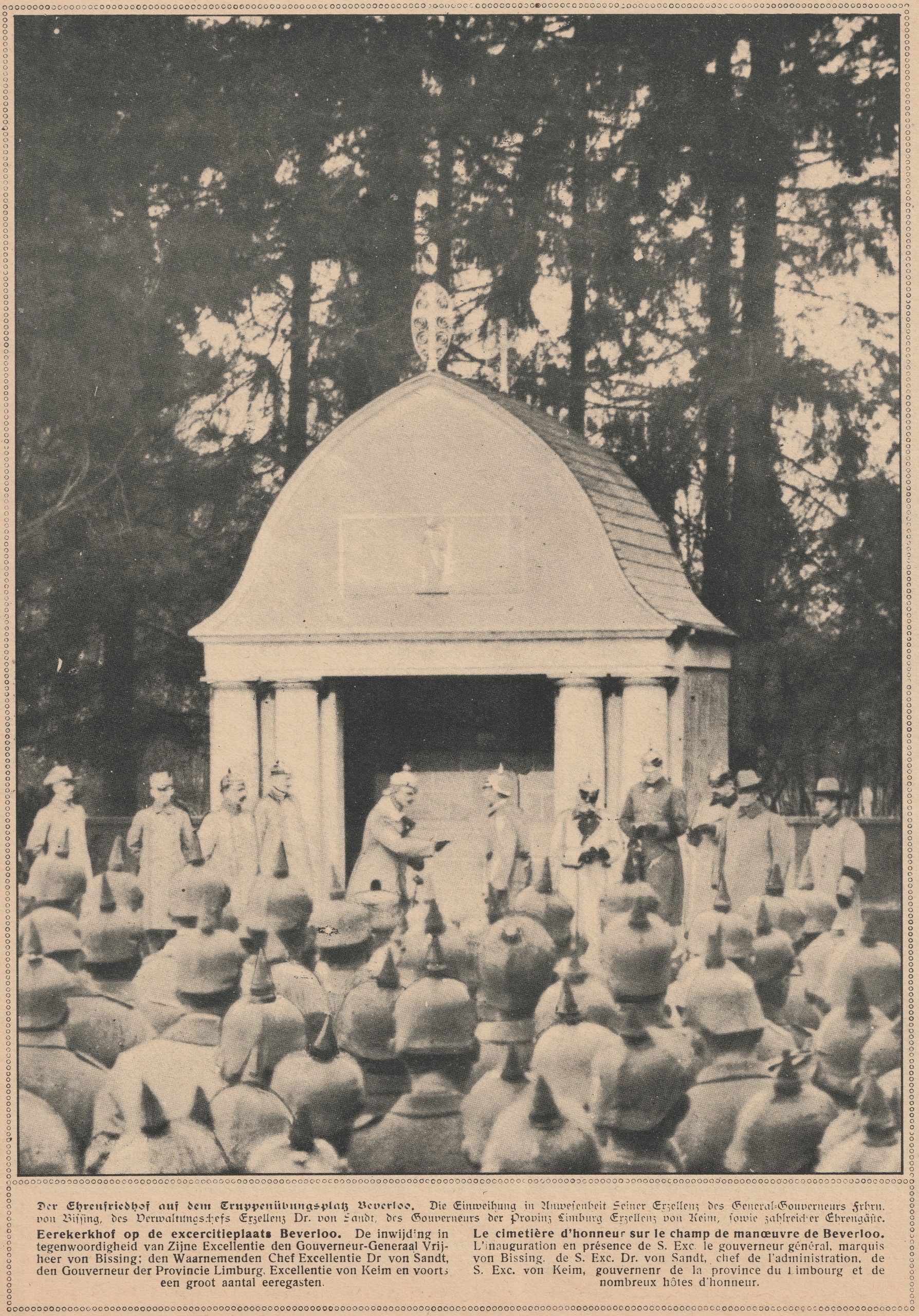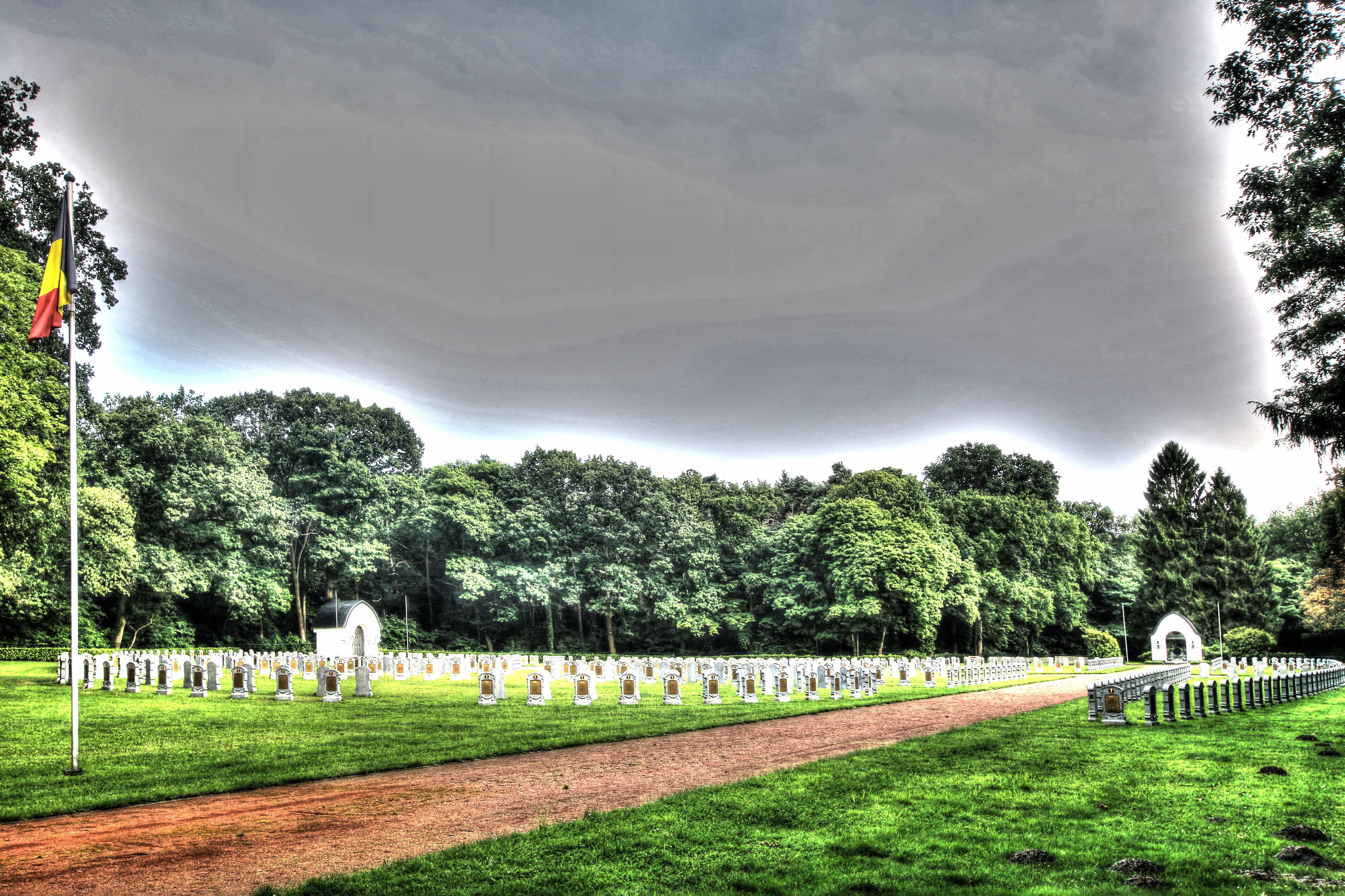|
Where the first church of the Camp Beverlo was built in 1837, the Belgian military cemetery now lies. It was built in 1928 at the place where the Germans established a war cemetery during World War I. The camp was a major troop training place for the occupant during WW I. Heavily injured Germans were nursed in the military hospital. Many of them died and were buried at this graveyard. As a result, it is called the German cemetery by the “Kampenaars” (inhabitants of Leopoldsburg). Here the victims of both world wars were buried. In 1945 the German material remains were transferred to the great German cemetery in Lommel. In 1972, the Ministry of Interior took over the cemetery and renewed it. Since January 01, 2004, the administration and maintenance of this Belgian Military Cemetery has been taken over by the Ministry of Defence. In 2008, the entire site was protected as a monument by the Flemish government. The cemetery consists of a number of peasants, but the most important architectural element in the cemetery is the old German memorial church, which was adapted as a commemoration of the perpetrated prisoners of war of both world wars at the end of 1940. Instead of ‘Den bis in den Tod Getreuen’ it now says: ‘hic jacet belli captivus IGNOTUS / PG INCONNU onbekend KG / 1914 1918 1940 1945’. Despite the fact that the chapel was partially rebuilt, the resemblance to the original drawing is still particularly striking. Inside, two authentic elements of the German chapel were reused: a bronze shield with sword and a painted glass with the blessing Christ and the apostles Peter and Paul. At the time, on the white pitcher on the inside, frescoes were also applied against a blue background. In the 1940’s expansion, a second chapel came as a copy of the converted German chapel on the eastern side of the cemetery of the First World War. It is also flanked by two Greek columns with the same roof and pediment. The second memorial chapel reminds the political prisoners of the Second World War, which means it doesn’t really fits with the tombs of the First World War. A second authentic element still reminiscent of the former German cemetery is the water well. The current brick construction replaces an original built by the Germans in natural stone. However, the artificial wrought iron is still the original from 1835. The deep water well itself was made by the Belgian engineers in the early period of the camp. Due to the intake of the German cemetery, the area of the Belgian cemetery extended to 183 acres. In total there are 1312 graves. |
A list with names of the buried can be found here and a map of the cemetery here.  (IllustrierterKriegs=Kurier 3.Jahrgang Nr. 18) |
This article is also available in
![]() Nederlands
Nederlands
